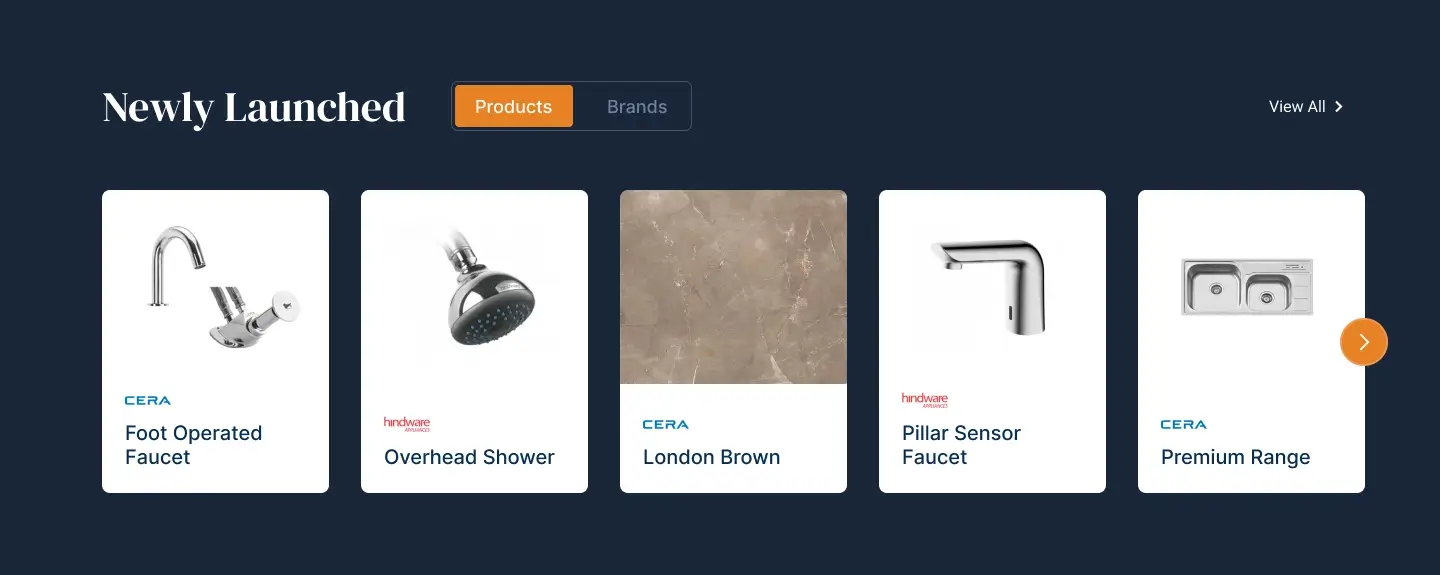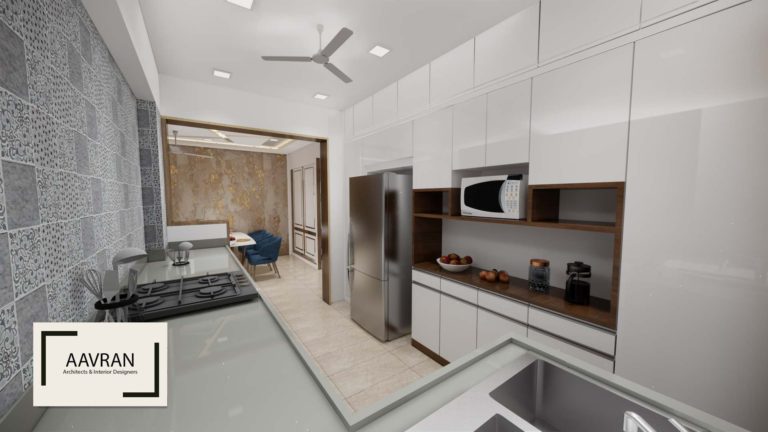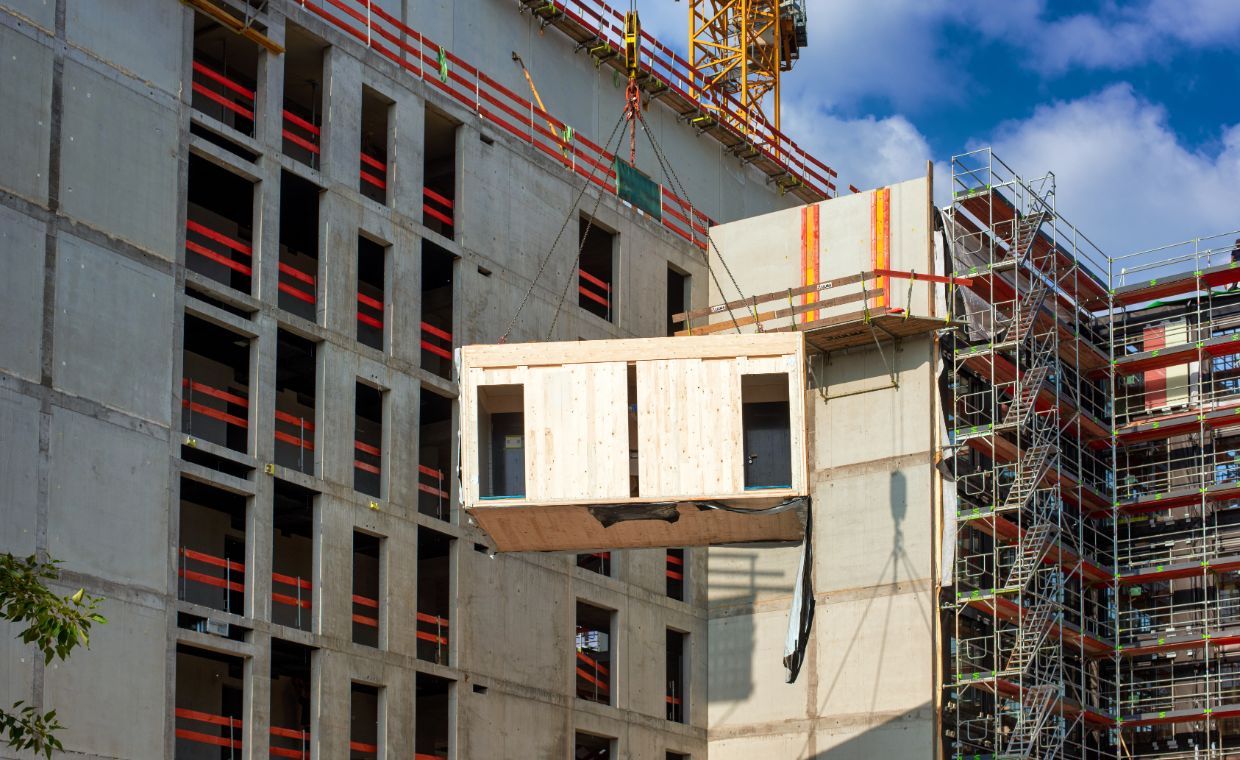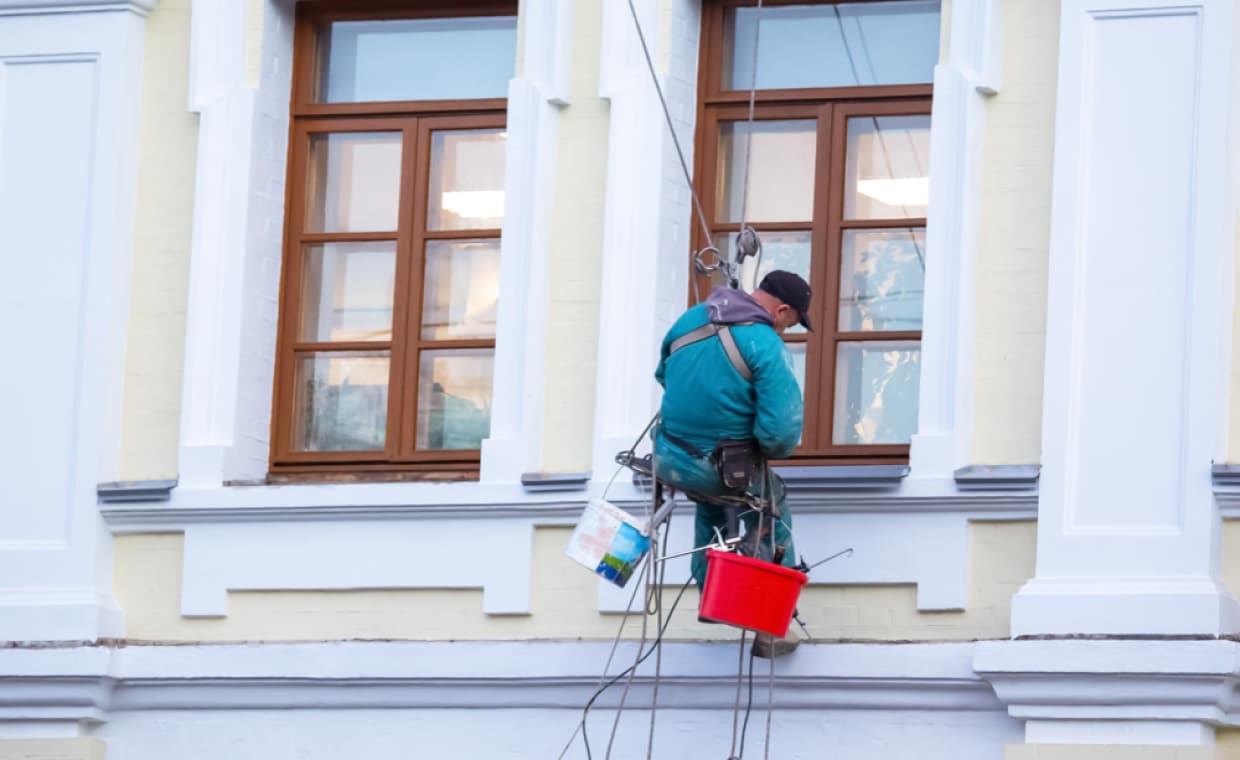
Table of Contents
Quick Overview
Here is the quick summary on exterior home maintenance costs:
- Exterior maintenance costs increase because of the height access, not skill.
- Simple tasks like gutter cleaning or fascia painting are overpriced.
- Renting scaffold towers makes safe DIY work easy.
- DIY saves hundreds versus hiring professional.
- Take the help of professionals only for complex or risky jobs.
- Safety and proper planning are essential.
Exterior home maintenance has become surprisingly expensive, and it’s not just because labour rates have gone up. The real problem is that homeowners often pay professionals for jobs they could reasonably handle themselves, simply because getting up high feels too dangerous or complicated. A gutter cleaning that costs £80 to £150, fascia painting at £500 or more, or basic roof inspections billed at £200, these aren’t technically difficult tasks. The challenge is access.
The height factor creates a psychological barrier that contractors know about and price accordingly. When someone calls a tradesperson for work that requires ladders or elevated platforms, part of what they’re paying for is the risk and equipment, not just the skilled labour. This makes sense for complex jobs that genuinely need expertise, but for straightforward maintenance tasks, homeowners end up paying a premium just to have someone willing to climb up.
Understanding which jobs are actually manageable with the right approach and equipment can cut annual maintenance costs significantly. It’s not about becoming a professional tradesperson or taking on risky work beyond one’s capability. It’s about recognizing that certain routine tasks don’t require specialized skills, just safe access and a bit of confidence.
The Access Equipment Gap is Reason for the Higher Exterior Home Maintenance Costs
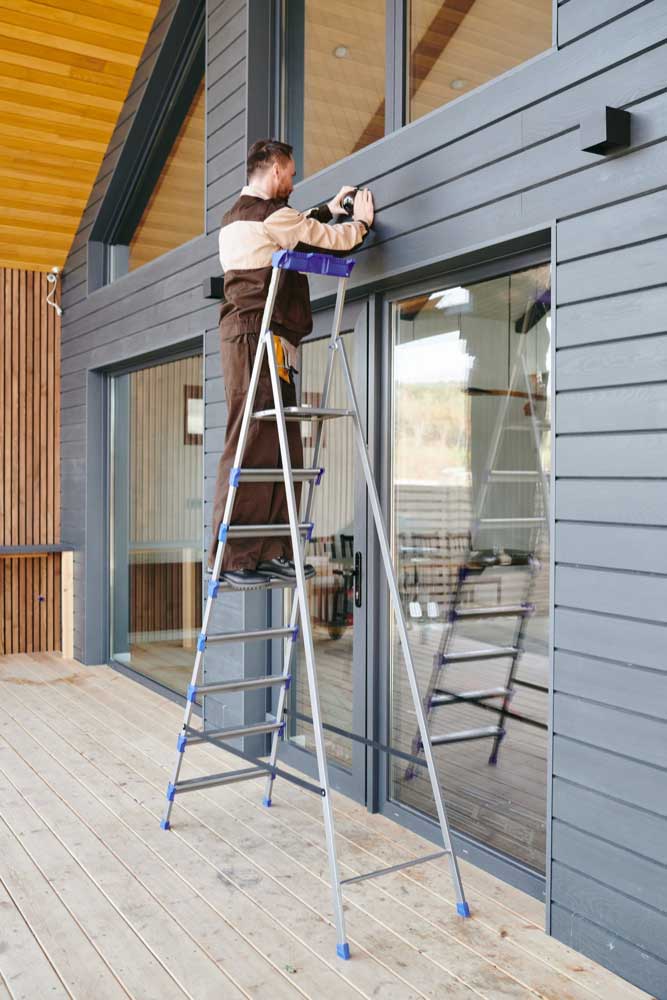
Most homeowners own a ladder, usually an extension ladder that gets pulled out once or twice a year. The problem is that ladders are fine for quick jobs but become impractical and genuinely unsafe for anything that takes more than 20 minutes or requires both hands free. Painting, cleaning, or making repairs from a ladder means constantly climbing up and down, repositioning, and working at awkward angles.
This is where the costs start piling up. Jobs that would take a professional an hour take homeowners three hours because they’re fighting with ladder placement. Or more commonly, homeowners look at the job, decide the ladder situation seems too precarious, and call someone who charges £200 for 45 minutes of actual work.
Many homeowners don’t realize that scaffold towers can be rented affordably for weekend projects, providing a stable platform that makes exterior work far more manageable. Having a proper working platform transforms tasks that feel risky on a ladder into straightforward jobs that most capable DIYers can handle without much difficulty.
Jobs That are Easier Than They Look
Gutter cleaning sits at the top of the list for unnecessarily expensive maintenance. Professionals charge £80 to £150 for something that takes about 30 minutes once they’re set up. The actual work involves scooping out leaves and debris, then flushing with a hose. There’s no technical skill involved, just the need to access the gutters safely.
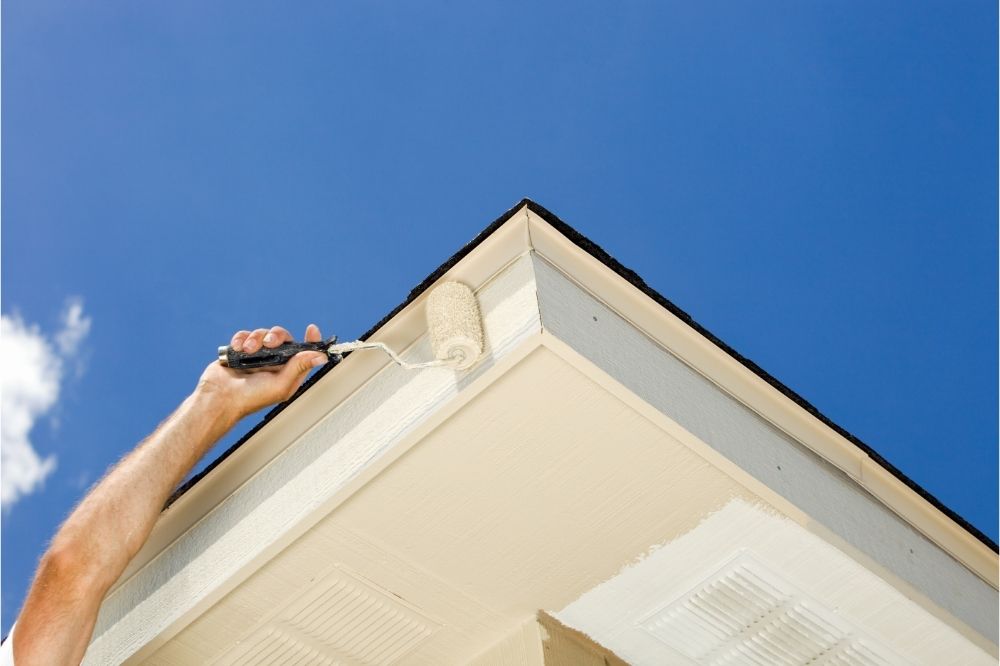
Fascia and soffit painting is another one. Getting quotes of £500 to £800 for painting the boards under the roofline isn’t unusual, but the work itself is just painting. It’s tedious and requires attention to detail, but it doesn’t need professional painting skills. What homeowners are really paying for is someone willing to set up access equipment and spend several hours working at height.
Basic roof inspections fall into the same category. An annual roof check to spot loose tiles, damaged flashing, or blocked valleys costs £150 to £200 when professionals do it. The inspection itself just requires looking carefully and knowing what problems to watch for. Any homeowner can learn to recognize common issues; the barrier is getting up there safely to look.
Exterior wood treatment and minor repairs often get bundled into expensive maintenance contracts when they’re quite doable. Treating window frames, repainting exterior doors, or replacing small sections of damaged weatherboarding doesn’t require specialized carpentry skills. These jobs cost money primarily because they’re spread across different areas of the house exterior, requiring multiple setups and access points.
Where Professional Help is Worth it
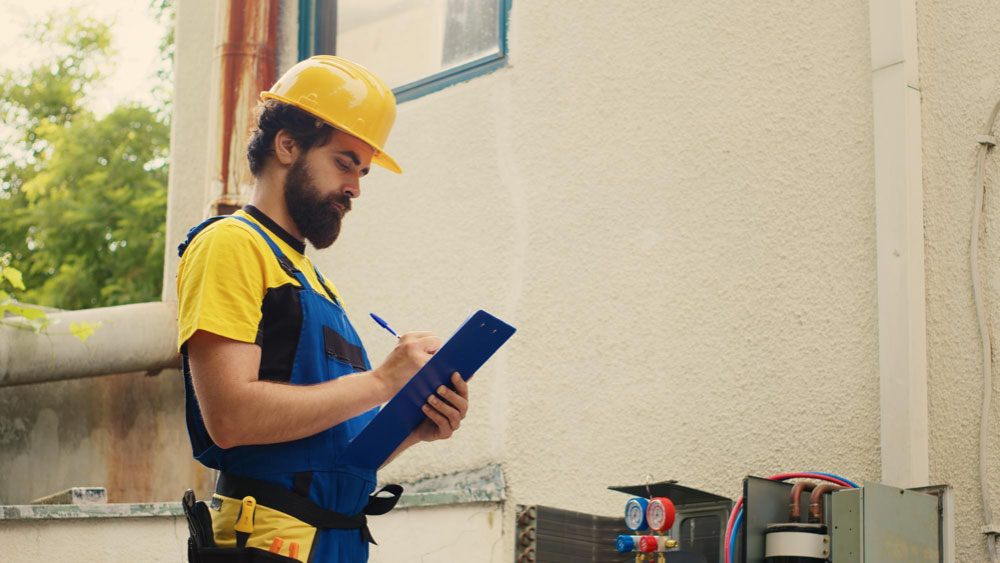
Not everything should be DIY, even with proper equipment. Anything involving the roof structure itself, working with electrics on the outside of the house, or repairs to chimneys generally needs professional expertise. The consequences of getting these wrong are too expensive or dangerous.
Repointing brickwork might seem straightforward, but it’s actually quite skilled work. Getting the mortar mix right, matching existing pointing styles, and ensuring proper weatherproofing takes experience. Poor repointing can cause more damage than it fixes, trapping moisture and leading to brick deterioration.
Major painting projects where the finish quality really matters often justify professional help. Homeowners can absolutely paint facias and guttering to a decent standard, but if the front of the house needs painting and curb appeal matters, the difference between amateur and professional results becomes noticeable. It depends on priorities and standards.
Any work involving structural changes, removing or altering roofline elements, or dealing with serious water damage should involve professionals. These situations need proper assessment and often building regulations compliance. The money saved by DIY isn’t worth the risk of creating bigger problems.
The Equipment Investment Calculation

Here’s where the math gets interesting. Renting access equipment for a weekend typically costs £50 to £100 depending on the tower height needed. For that same money, homeowners can tackle multiple jobs that would individually cost hundreds to hire out.
Take a typical maintenance weekend: clean the gutters (£100 saved), inspect the roof (£150 saved), repaint the fascia boards (£600 saved), and treat the window frames (£200 saved). That’s over £1,000 in labour costs for jobs that could be done in two days with rented equipment costing £75.
The equipment rental pays for itself immediately on the first use, and most homeowners have several exterior maintenance tasks that have been put off because getting quotes felt like too much hassle or the prices seemed unreasonable. Batching these jobs into one weekend with proper access equipment makes them much more approachable.
For homeowners who are comfortable with heights and have decent DIY skills, buying equipment outright can make sense. A basic tower system costs £300 to £600, which sounds expensive until you calculate how many times over the years it will save calling out contractors for simple jobs. Three or four uses and it’s paid for itself.
Safety Considerations That Actually Matter
Working at height does carry risks, and pretending otherwise would be irresponsible. The key is using appropriate equipment and understanding limitations. A stable platform with guardrails is infinitely safer than stretching from a ladder. That’s not opinion, it’s reflected in accident statistics.
Weather matters more than most people realize. Wind that barely registers at ground level can be significantly stronger at roof height, making even stable platforms feel unstable. Working on wet surfaces or when rain is forecast creates unnecessary risks. Scheduling exterior work for calm, dry days is non-negotiable.
Having someone else around isn’t legally required but it’s sensible. They don’t need to help with the work, but having another person on site means if something goes wrong, there’s someone to respond quickly. This is especially important for solo homeowners tackling exterior maintenance.
Understanding personal limitations is crucial. Some people have no issues with heights, others get uncomfortable above first floor level. There’s no shame in recognizing that working at height isn’t for everyone. But for those who are comfortable up high, the barrier is often equipment rather than ability.
Making the Economics Work
The financial case for DIY exterior maintenance depends on how much needs doing and how often. A house that needs minimal exterior work might not justify equipment investment. But most homes in the UK, especially older properties, need regular attention to gutters, paintwork, and general weatherproofing.
Even just doing half the exterior maintenance work yourself while hiring professionals for the complex or risky jobs still cuts costs significantly. The key is being honest about capabilities and choosing jobs that match skill levels and comfort zones.
Timing matters too. Bunching exterior jobs together rather than addressing them piecemeal makes better financial sense. Getting equipment for a weekend and working through a maintenance list is far more economical than calling out contractors three separate times throughout the year.
The bigger picture is that exterior maintenance doesn’t have to be as expensive as it has become. Yes, professional expertise has value and should be paid fairly. But when homeowners are paying premium rates simply because a job requires height access rather than specialized skills, that’s where money can be saved without compromising on quality or safety. It just requires a shift in thinking about what’s actually achievable with the right equipment and a bit of planning.
Also Read: 13 Exterior House Cleaning Tips to Ease Seasonal Maintenance
FAQs on Exterior Home Maintenance Costs
1. Which Exterior Maintenance Work is Easiest to DIY?
Gutter cleaning, fascia and soffit painting, basic roof inspections, treating woodwork, and repainting exterior trim are all manageable with proper access equipment.
2. What is the Access Equipment Gap?
Most homeowners only own ladders, which are unsafe or impractical for extended work. Affordable scaffold towers solve this problem by offering safer, stable access.
3. What are Key Safety Tips for Working at Height?
Use stable platforms with guardrails, avoid windy or wet weather, and keep stand-by person onsite for safety backup.



